Gabriella Munoz reviews “The World Was Whole” by Fiona Wright
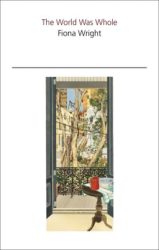
The World Was Whole
By Fiona Wright
Giramondo
ISBN: 978-1-925336-97-9
Reviewed by GABRIELLA MUNOZ
With four published books, poet, essayist and critic Fiona Wright has become an important voice in the Australian literary scene. Born in 1983 in New South Wales, Wright published her first collection of poems, Knuckled, in 2011. In it, she explores issues such as belonging, identity and sense of place, three themes that constantly re-emerge in her writing. Knuckled was followed by the book of essays Small Acts of Disappearance: Essays on Hunger (Giramondo, 2015), where she writes candidly about her anorexia. This condition, which developed as a consequence of a rare stomach problem, has marked her adult years by triggering questions of what it means to live in a changing and often foreign body. For this book she won the 2016 Nita B. Kibble Award and the Queensland Literary Award for non-fiction. The book was followed by the collection of poems Domestic Interior (Giramondo, 2017), in which, as Magdalena Ball explained, Wright is skilful in conflating ‘the domestic or familiar with the moment of transformation’.
Her fourth book, the collection of essays The World Was Whole (Giramondo, 2018), is the follow-up to Small Acts of Disappearance and a powerful reflection about the frailty of our bodies and the journey to find and build a home. The 13 essays, some of which had been previously published and were edited for this collection, are a mix of sociological observation, generational manifesto and historical account of Sydney’s utopian suburbia and newly gentrified inner-city suburbs. The title is borrowed from Louise Gluck’s poem ‘Aubade’. Wright references this poem in the eighth essay of the collection ‘The World Was Whole, Always’, in which she chronicles her move to a new shared accommodation in one of Sydney’s inner west suburbs, where most of the essays in this collection take place.
The starting point, however, is suburbia and Wright’s initial bouts with illness. In ‘To Run Away From Home’, she revisits her childhood suburb, Menai, in the outskirts of Sydney to give the reader a picture of life in the suburbs. Wright is no stranger to writing about the suburbs. Her PhD dissertation, Staging The Suburb Imagination, Transformation and Suburbia in Australian Poetry, which gave way to the poem collection Domestic Interior, explores the Australian suburbs and how they have changed, and in ‘To Run Away From Home’ she gives us a panorama of suburbia from its invention at the turn of the 20th century to the present, introducing the reader to her experience and readings of the suburbs and how they have changed particularly over the past two decades, when as Wright notes, renovation became a trope of suburbia:
‘Renovation, in the last 20 years, has become as much a trope of suburbia as lawnmowers, Hills hoists and Sunday car-washing were for the generations that preceded mine: it’s no longer just about keeping house but remaking it, physically marking our dominion over our domain’ (11).
In her reflection about the suburbs the poet connects the house and the body and quotes from French philosopher, Gaston Bachelard’s The Poetics of Space, to analyse her relation with the places she has lived in, particularly her first home, and her body. Bachelard argues that the places we inhabit become inscribed in our body and that our body shapes our home (we scratch walls, leave hair and skin cells on surfaces). That is to say, we carry our homes within our bodies. For Wright, however, this connection was fractured when she was diagnosed with anorexia. As she writes, ‘Illness is a state we do not think of as everyday, but it affects those of us it impresses itself upon every single day. Those baseline expectations I had to reset, and it’s hard, sometimes, not to long or grieve for my younger, healthy self, whose world was unruptured, who was still able to forget.’ (5)
Almost at the end of ‘To Run Away from Home’, Wright explains that what she likes about Bachelard’s notion of ‘the house we were born in physically inscribed in us all’ is that it gives hope because the idea of homeliness is always in us; a thought that seems particularly relevant for those whose bodies feel sometimes foreign, or those who are chronically ill, and for those who can’t afford to buy a house and can be evicted any time. Bachelard suggests that ‘a house constitutes a body of images that give mankind proofs or illusions of stability. We are constantly re-imagining its reality.’ In this collection’s essays Wright seems to be doing this, re-imagining her reality to find a sense of place, of homeliness.
In ‘To Run Away From Home’, Wright also draws a parallel between her body and the social and cultural transformation of her hometown. It also gives way to the essay, ‘Back to Cronulla’, where the author talks about the Cronulla Riots, a series of racially-targeted violent acts which took place between 11th-13th December, 2005. These events marred the country and revealed longstanding, but often ignored, racial tensions that are alive and well today. The poet and critic delves into what existing in such a place meant to her and her sense of self at the time:
My friends and I were outsiders in Cronulla — and would have been too, in the earlier Cronulla of Debbie and Sue — but we wore this proudly … The difference wasn’t only territorial, I suppose — my friends and I prided ourselves on dressing differently, with the coloured hair and mismatched clothes of the tail end of grunge. Maybe it was gendered, because we were all women; it may also have been racialised — my school drew students from the length and breadth of southern Sydney, so we were a diverse crew, and this became all the more obvious against the prevailing whiteness of the beach — although I don’t think I understood this at the time. (45)
When years later, Wright goes to an Italian restaurant in Cronulla to celebrate her parents’ 40th anniversary, she uses the experience as a pretext to talk about the way the suburb has changed and how Sydney’s inner west, where she lives now, is changing too. The connection brings up, again, questions of place and home and the way in which urban and suburban spaces are being modified: ‘But it also seems to me that this very urban space is suburbanising — more chain shops, more baby shops, more renovations — while at the same time Cronulla, and so many suburbs like it, has been urbanising. The inner-west is also the only area in Sydney that has grown less culturally diverse each time the Bureau of Statistic takes its measures.’ (53)
Wright’s attempts to find a home are not dissimilar from those of a generation who can’t save for a mortgage and don’t have traditional 9-to-5 jobs but are part of the gig economy. After receiving another eviction notice, Wright is forced to find new accommodation and this becomes the subject of ‘Perhaps This One Will Be My Last Share House’. In her journey, the author touches upon the housing crisis in Sydney and reflects (and makes the reader ponder) on what the concepts of family, friendship and home mean for people in Australia who need to rent and share accommodation. ‘And it’s only this that I want: shelter, and security, a stable base from which to build myself and life without constant inconsistency, without the everyday threat that it could all, that day, be once again taken away.’ (105) She also describes sharply the process that getting a new lease means — phone calls, open houses, applications, the news your applications came second, bad timing, the uncertainty of not knowing if you’ll have a place to move to when your lease expiries.
The essay ‘Relaxed, Even Resigned’ is perhaps the most moving of the collection. Here, the author delves into the concepts of body, home, food and ritual, four elements ever so present in this book and in some of her previous work. Here she narrates how after her condition worsens and her anxiety escalates she is admitted to a hospital as in-patient to receive treatment. Removed from her rituals and her home, Wright doesn’t spare in the descriptions of the hospital and her feelings. The conclusion, however, offers the reader hope and also finds the author in a place of self-acceptance:
I’d missed my home, the habits I have and are shaped by it, the small delights it gives me across the day. I felt collected, grounded. And I thought, I must remember this, in the coming months, as my habits and routines become once more invisible because of their ordinariness, their everyday repetition. I must remember how they help me, hold me. I walked along King Street, just to feel it on my skin. (86)
Key to this book is empathy. The author feels empathy, even guilt, towards those who are vulnerable, but also towards herself. The World Was Whole is not only a personal analysis of our convoluted times but also a glimpse into a journey of transformation and acceptance, and a search for beauty in the ordinary. These essays are a poetic approach to place and the importance of paying attention to the minutiae of daily life.
Notes
Bachelard, Gaston. La Poétique de l’Espace (Paris, Presses Universitaires de France, 1958) translated by Maria Jolas The Poetics of Space (Boston: Beacon Press, 1964) p.4
Ball, Magdalena. ‘A review of Domestic Interior by Fiona Wright’ in The Compulsive Reader http://www.compulsivereader.com/2018/04/12/a-review-of-domestic-interior-by-fiona-wright/
GABRIELLA MUNOZ is a Melbourne-based writer and translator. Her non-fiction has been published in The Sydney Morning Herald, Eureka Street and The Victorian Writer, among others. Her fiction has been published in Mexico and Australia. She’s the inaugural digital writer in residence at Writers Victoria and is currently working on her first collection of short stories.
 On Patrick White
On Patrick White 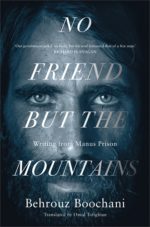 No Friend But The Mountains
No Friend But The Mountains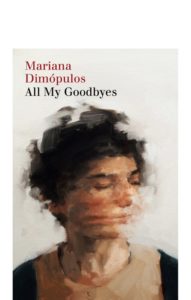
 Mosaics from the Map
Mosaics from the Map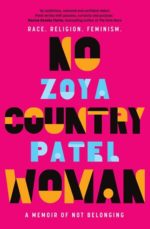 No Country Woman: A Memoir of Not Belonging
No Country Woman: A Memoir of Not Belonging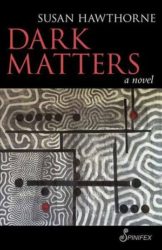 Dark Matters
Dark Matters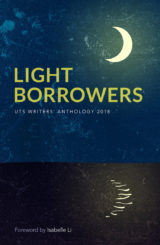 Light Borrowers: UTS Writers’ Anthology 2018
Light Borrowers: UTS Writers’ Anthology 2018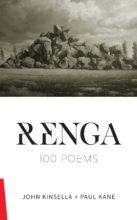 Renga: 100 Poems
Renga: 100 Poems